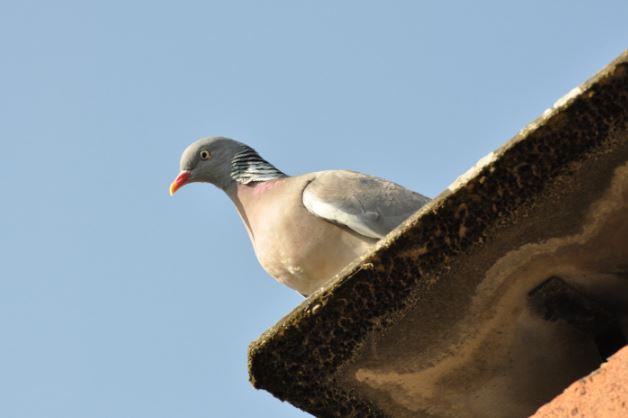 Birds are one of the biggest problems urban gardeners face. Nuisance birds like pigeons, starlings, and sparrows take crops and agriculture grown in gardens as theirs to eat. This cuts down on your crops and takes away from the overall yield.
Birds are one of the biggest problems urban gardeners face. Nuisance birds like pigeons, starlings, and sparrows take crops and agriculture grown in gardens as theirs to eat. This cuts down on your crops and takes away from the overall yield.
Luckily, there are ways to block birds out from getting into your urban garden.
The first way to block birds from your urban garden is direct exclusion. This means installing a structure like a greenhouse or putting bird netting around your crops to prevent birds from getting into them.
Installing a greenhouse will block birds and other small critters out entirely while still allowing the sun to get onto your plants. You will need to water the plants yourself or install a sprinkler, but reciprocally, your garden will be protected from overwhelming storms. A greenhouse also gives you more control over the temperature of your garden and the humidity.
It is not always feasible to install a greenhouse, however. In many scenarios, bird netting is a better option for excluding birds entirely. Bird netting can be draped over plants or installed over a scaffolding to protect the plants from birds and other critters. A scaffolding set up will protect the plants from birds better than netting alone, as with netting alone birds can still access the outside of the crops through the netting, but it is more involved to install a scaffolding structure.
Bird netting is a great solution that can work for almost any urban garden. If installed properly, it excludes birds at a rate at which other methods, like scarecrows or fake owls, cannot compare.
The other major option for deterring birds from urban gardens is a chemical repellent like methyl anthranilate. Methyl anthranilate is the grape flavoring agent found in some candies and sodas. Birds dislike the taste and scent of it and will avoid plants and crops treated with it. It can be applied in a liquid form to plants and crops in a garden to keep birds from eating crops.
Methyl anthranilate is harmless to birds, humans, and the environment. It does not impact the taste of crops once it is washed off. Methyl anthranilate is among the safest of the chemical repellents and bird control companies often recommend it because of that. It can be bought online from a bird control retailer or sourced from a bird control company like AviAway in conjunction with an overall bird control plan.
In addition to these methods, there are a couple of more options that can repel birds, although at a lower rate than a greenhouse, bird netting, or methyl anthranilate.
The first is sound machines. Sound machines broadcast bird species distress calls and predator cries. Birds hear that other birds of their species find the area dangerous and will avoid it.
Sound machines do work if the bird problem is light. The trouble with sound machines for a garden is that birds have a big reason to be in that garden: they want the food inside. They may risk the hawk calls and fly in to get food from the garden anyway.
The other option for bird deterrence for an urban garden is scarecrows. Scarecrows, fake owls, and terror eyes pose a visual risk for birds looking to eat plants and crops from a garden. Scarecrows will likely deter some birds from a garden for a time, but over the long run, especially if they are not moved often, birds get used to the static scarecrows and will move in to eat from the garden regardless.
Summary: The best options for bird control for an urban garden are usually bird exclusion, meaning installing a greenhouse or bird netting, or methyl anthranilate application to the crops. Sound machines and scarecrows can also scare off some birds for a time.


